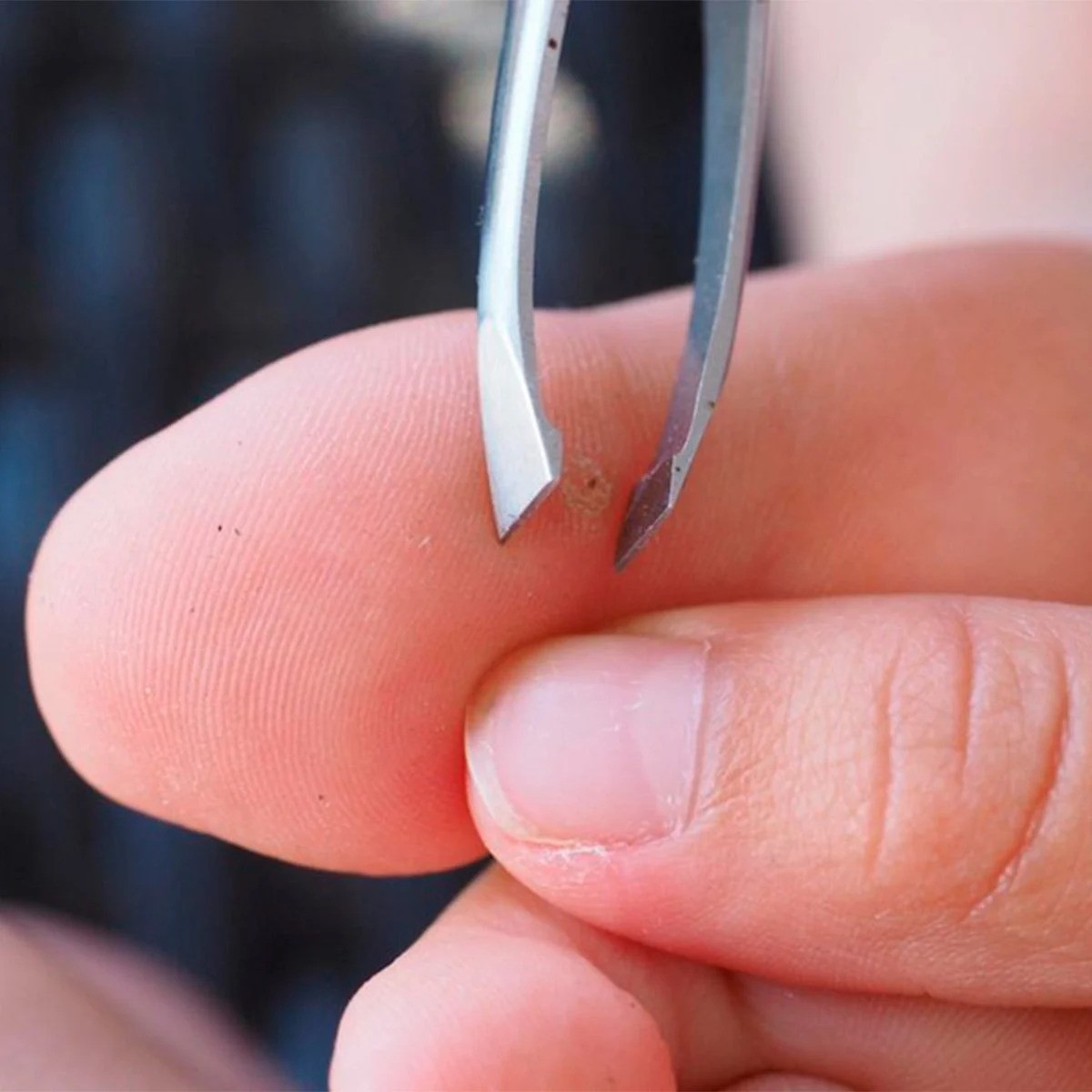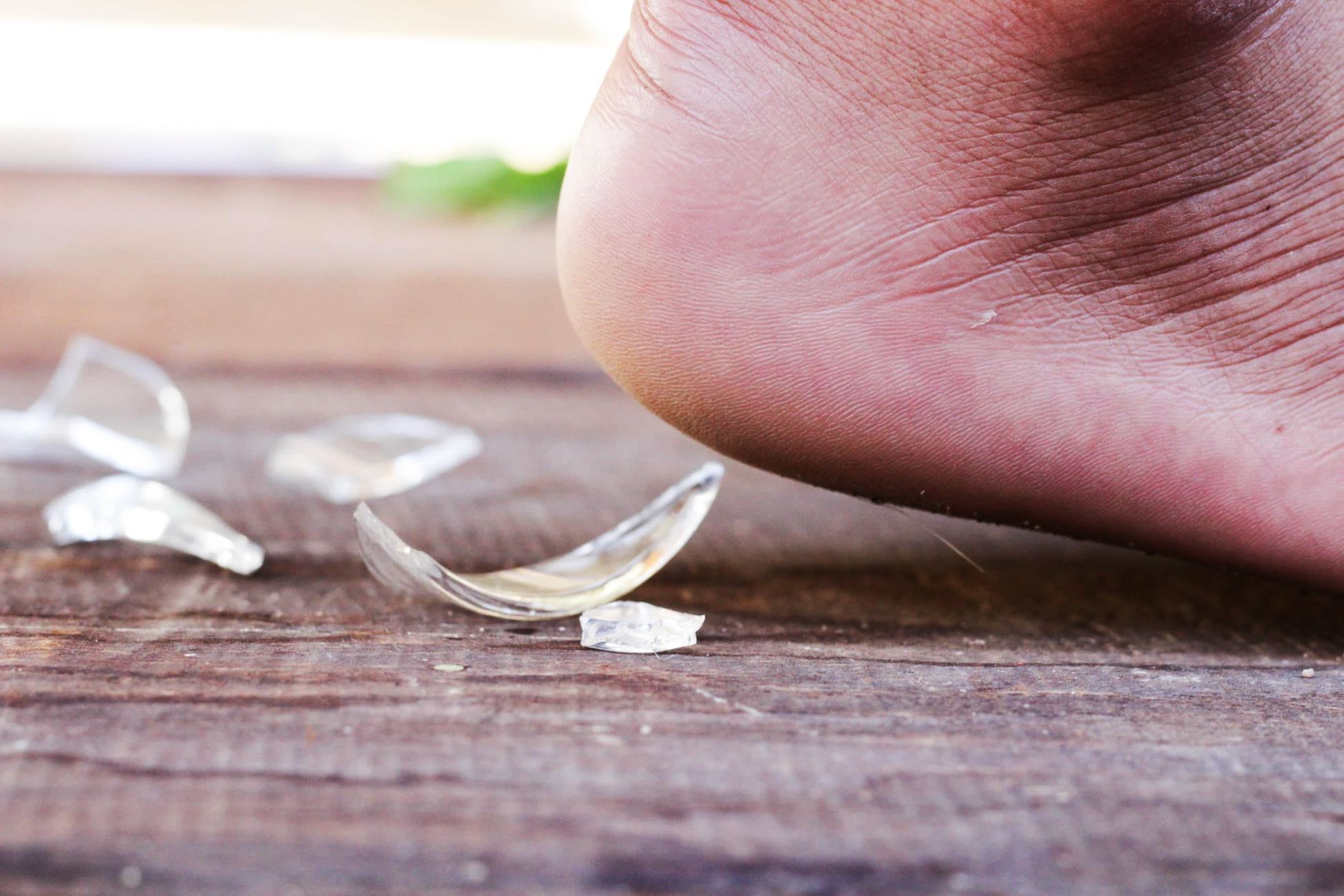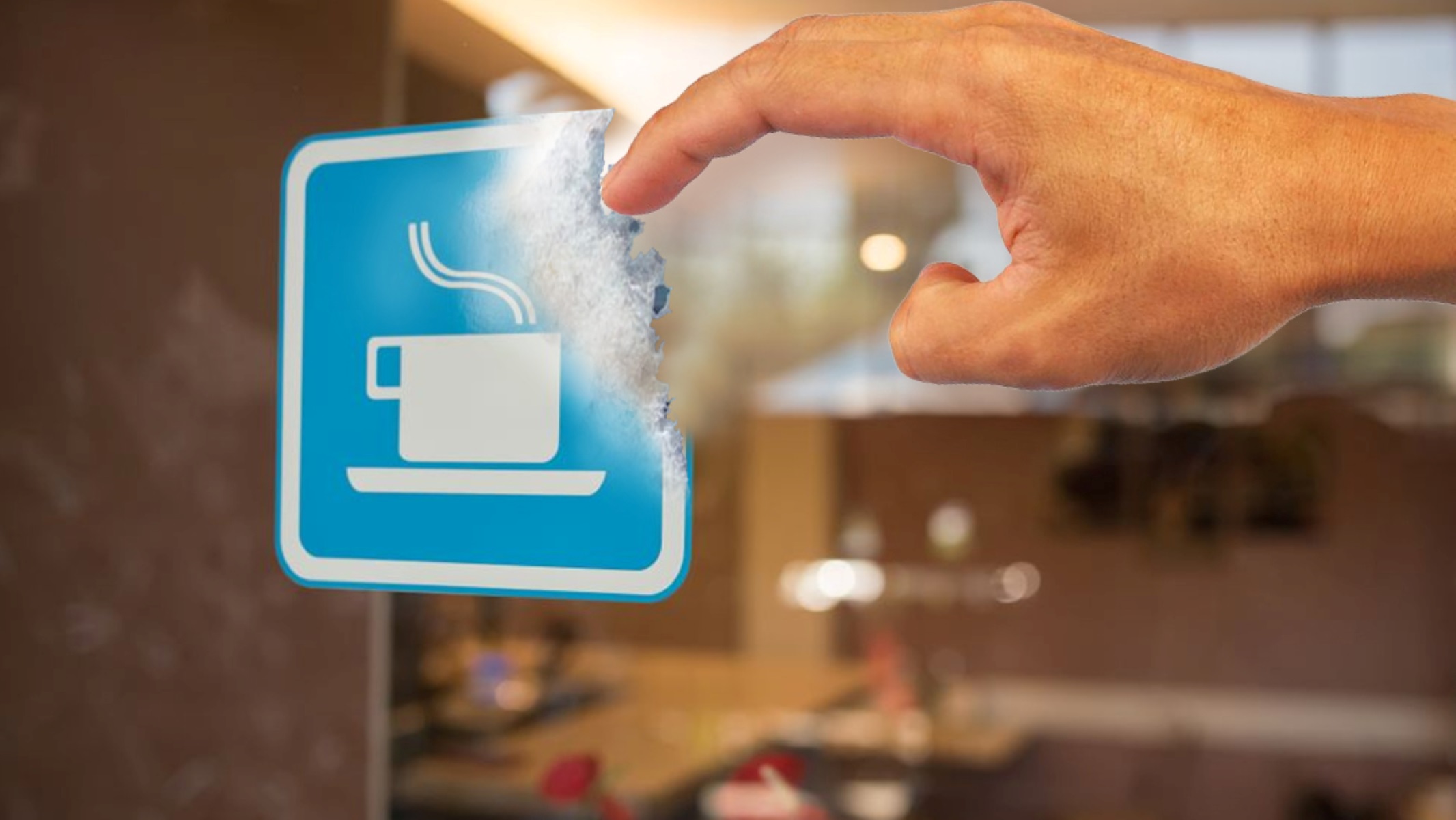Home>Furniture & Design>Interior Design Trends>How To Remove Haze From Glass


Interior Design Trends
How To Remove Haze From Glass
Modified: August 25, 2024
Learn how to remove haze from glass and keep up with the latest interior design trends. Discover effective techniques and tips for crystal-clear glass surfaces.
(Many of the links in this article redirect to a specific reviewed product. Your purchase of these products through affiliate links helps to generate commission for Storables.com, at no extra cost. Learn more)
Introduction
Glass is a versatile and elegant material that adds a touch of sophistication to any space. Whether it's the windows in your home, the glassware in your kitchen, or the decorative glass surfaces in your office, maintaining their clarity and shine is essential for preserving their aesthetic appeal. However, over time, glass can develop a hazy or cloudy appearance, diminishing its transparency and luster. Understanding the causes of haze on glass and the methods for effectively removing it is crucial for keeping your glass surfaces looking pristine.
Haze on glass can result from various factors, including mineral deposits, hard water stains, environmental pollutants, and improper cleaning techniques. These culprits can leave unsightly residues that obscure the natural brilliance of glass, making it appear dull and unattractive. Fortunately, there are several approaches to address this issue, ranging from DIY household remedies to professional cleaning services. By exploring these methods, you can restore the clarity and sheen of your glass items, revitalizing their visual appeal.
In this comprehensive guide, we will delve into the causes of haze on glass and explore the most effective techniques for removing it. From utilizing common household products to enlisting the expertise of professional cleaners, we will uncover the best practices for restoring the pristine condition of your glass surfaces. Additionally, we will discuss preventive measures to minimize the recurrence of haze, allowing you to maintain the beauty and transparency of your glass elements for the long term.
By gaining insight into the underlying reasons for glass haze and learning the appropriate removal methods, you can elevate the aesthetics of your living or working environment. With the right knowledge and tools at your disposal, you can bid farewell to the haze and welcome back the sparkling clarity of your cherished glass possessions. Let's embark on this journey to reclaim the radiance of your glass surfaces and ensure they remain a captivating feature of your surroundings.
Key Takeaways:
- Say goodbye to glass haze by using household products like vinegar, baking soda, and lemon juice. These common items can restore the sparkle of your glass surfaces without the need for specialized cleaners.
- Prevent haze buildup on glass by cleaning regularly, using distilled water, applying protective coatings, ensuring proper ventilation, and avoiding harsh cleaning agents. These proactive measures maintain the pristine clarity of your glass items.
Read more: How To Remove Haze From Car Windows
Understanding the Causes of Haze on Glass
Glass, renowned for its transparency and sleek appearance, can fall victim to a frustrating phenomenon known as haze. This cloudy or filmy layer can obscure the once-clear surface, detracting from its aesthetic appeal. To effectively address this issue, it's essential to comprehend the various factors that contribute to the development of haze on glass.
One common culprit behind glass haze is mineral deposits. When hard water evaporates on glass surfaces, it leaves behind mineral residues, resulting in a hazy film. This is particularly prevalent in areas with high mineral content in the water supply. Over time, these deposits can accumulate, diminishing the glass's clarity and creating an unsightly appearance.
Environmental pollutants also play a significant role in causing haze on glass. Airborne particles, such as dust, pollen, and industrial pollutants, can settle on glass surfaces, forming a thin layer that obscures transparency. Additionally, exposure to elements like smoke and soot can contribute to the buildup of haze, especially on exterior windows and glass doors.
Improper cleaning techniques can exacerbate the haze on glass. The use of harsh or abrasive cleaners, as well as rough cleaning tools, can leave behind microscopic scratches and residues, leading to a cloudy or streaky appearance. Furthermore, neglecting to thoroughly rinse off cleaning agents can result in residual buildup, further contributing to the haze.
Hard water stains, caused by the mineral content in water, are another common factor in the development of glass haze. These stains can be particularly stubborn, adhering to the glass surface and creating a cloudy or spotty effect that diminishes transparency.
Understanding these causes of haze on glass is crucial for implementing effective removal and prevention strategies. By identifying the underlying factors contributing to the haze, you can tailor your approach to restoring the glass's clarity and preventing future buildup. With this knowledge in hand, you can embark on the journey to reclaim the pristine appearance of your glass surfaces, ensuring they remain a captivating and elegant feature of your surroundings.
Methods for Removing Haze from Glass
When it comes to restoring the clarity and brilliance of glass surfaces, several effective methods can be employed to remove haze and revive their pristine appearance. Whether addressing mineral deposits, hard water stains, or environmental pollutants, the following techniques offer practical solutions for eliminating haze from glass:
-
Vinegar Solution: A simple yet potent remedy for combating glass haze involves using a vinegar solution. By mixing equal parts of distilled white vinegar and water, you can create a powerful cleaning agent that effectively dissolves mineral deposits and hard water stains. Apply the solution to the affected glass surface, allowing it to sit for a few minutes before gently scrubbing with a non-abrasive sponge or cloth. Rinse thoroughly with clean water and dry the glass to reveal a renewed transparency.
-
Baking Soda Paste: For stubborn haze and mineral buildup, a baking soda paste can serve as an abrasive yet gentle cleaning solution. Mix baking soda with a small amount of water to form a paste, then apply it to the hazy glass surface. Using a soft cloth or sponge, gently scrub the area in circular motions to lift the residues. Afterward, rinse the glass thoroughly and wipe it dry to unveil a revitalized clarity.
-
Commercial Glass Cleaners: Utilizing specialized glass cleaners formulated to dissolve mineral deposits and hard water stains can provide an efficient solution for removing haze. These products are designed to effectively tackle stubborn residues while restoring the glass's transparency. When using commercial cleaners, follow the manufacturer's instructions for optimal results and ensure proper ventilation in the cleaning area.
-
Lemon Juice: The natural acidity of lemon juice makes it an excellent ally in combating glass haze. Applying undiluted lemon juice to the affected areas and allowing it to sit for a few minutes can help dissolve mineral deposits and stains. Afterward, gently scrub the glass surface and rinse thoroughly to reveal a refreshed and gleaming appearance.
-
Razor Blade Scraper: In cases of persistent haze or hard water stains, a razor blade scraper can be used with caution to carefully remove the residues from the glass surface. This method requires precision and a steady hand to avoid scratching the glass. It is essential to use a new, sharp razor blade and ensure that the glass is moistened with a cleaning solution to minimize friction.
By employing these methods, you can effectively remove haze from glass surfaces, restoring their clarity and luster. Whether opting for natural remedies or commercial cleaners, each approach offers a pathway to rejuvenating the visual appeal of your glass items, ensuring they remain a captivating and elegant feature of your living or working space.
Using Household Products to Remove Haze
When it comes to combating haze on glass surfaces, household products offer a range of effective and accessible solutions. These readily available items can be harnessed to dissolve mineral deposits, eliminate hard water stains, and restore the pristine clarity of glass. By leveraging the power of common household products, you can effectively address haze-related issues and rejuvenate the visual appeal of your glass items.
One of the most versatile and widely used household products for removing glass haze is distilled white vinegar. Its acidic nature makes it an excellent agent for dissolving mineral deposits and hard water stains. By creating a simple yet potent cleaning solution with equal parts of distilled white vinegar and water, you can effectively combat haze on glass surfaces. This solution can be applied using a spray bottle or a damp cloth, allowing it to sit for a few minutes before gently scrubbing the affected areas. The acidic properties of vinegar work to break down the residues, restoring the glass's transparency and luster.
Baking soda, another staple household product, serves as an abrasive yet gentle cleaning agent for combating stubborn haze and mineral buildup on glass. By mixing baking soda with a small amount of water to form a paste, you can create an effective solution for lifting residues and restoring the glass's clarity. This paste can be applied to the hazy areas and gently scrubbed using a soft cloth or sponge. The mild abrasiveness of baking soda aids in dislodging the deposits, allowing for thorough rinsing and drying to reveal a revitalized glass surface.
Lemon juice, with its natural acidity, is also a valuable household ally in the battle against glass haze. The undiluted juice can be applied directly to the affected areas, where its acidic properties work to dissolve mineral deposits and stains. After allowing the lemon juice to sit for a few minutes, gentle scrubbing and thorough rinsing unveil a refreshed and gleaming glass surface.
These household products offer accessible and effective solutions for removing haze from glass, allowing you to restore the transparency and luster of your glass items without the need for specialized cleaners. By harnessing the power of vinegar, baking soda, and lemon juice, you can rejuvenate the visual appeal of your glass surfaces, ensuring they remain a captivating and elegant feature of your living or working space.
Professional Cleaning Options
In instances where haze on glass surfaces proves particularly stubborn or extensive, seeking professional cleaning services can offer a comprehensive solution for restoring the pristine clarity of glass. Professional cleaners possess the expertise, specialized equipment, and advanced cleaning agents necessary to effectively address persistent haze and rejuvenate glass surfaces to their original brilliance.
Professional cleaning companies specializing in glass restoration and maintenance employ a range of advanced techniques to tackle haze-related issues. These techniques may include the use of specialized glass cleaning solutions formulated to dissolve mineral deposits, hard water stains, and environmental pollutants. These professional-grade cleaners are designed to deliver powerful yet safe cleaning, effectively removing stubborn residues without compromising the integrity of the glass.
Moreover, professional cleaners utilize advanced equipment such as high-quality squeegees, microfiber cloths, and precision tools to ensure thorough and meticulous cleaning. Their expertise in handling delicate glass surfaces enables them to navigate intricate architectural features, decorative glass elements, and expansive windows with precision and care.
In addition to their technical proficiency, professional cleaners adhere to industry best practices and safety standards, ensuring that the cleaning process is conducted with meticulous attention to detail and without causing damage to the glass. Their thorough approach encompasses the removal of haze, streaks, and blemishes, resulting in glass surfaces that exude a renewed brilliance and transparency.
Furthermore, professional cleaning services often offer tailored maintenance plans to prevent the recurrence of haze and maintain the pristine condition of glass surfaces over time. These plans may include scheduled cleaning and maintenance visits, ensuring that glass elements continue to radiate their inherent elegance and visual allure.
By enlisting professional cleaning services, individuals and businesses can benefit from the expertise and specialized resources of trained professionals, ensuring that haze on glass surfaces is effectively eradicated, and the glass's original luster is restored. This approach not only saves time and effort but also guarantees exceptional results, allowing glass surfaces to remain a captivating and elegant feature of any environment.
Read more: How To Remove Resin From Glass
Preventing Haze Buildup on Glass
Preventing haze buildup on glass surfaces is essential for maintaining their pristine clarity and visual appeal over time. By implementing proactive measures and regular maintenance practices, you can minimize the recurrence of haze, ensuring that your glass items continue to exude a captivating brilliance. Here are effective strategies for preventing haze buildup on glass:
Regular Cleaning and Maintenance
Consistent and thorough cleaning is paramount in preventing haze buildup on glass. Establishing a regular cleaning schedule, whether for windows, glass tabletops, or decorative glass elements, helps prevent the accumulation of mineral deposits, hard water stains, and environmental pollutants. Using a mild, non-abrasive glass cleaner and a soft, lint-free cloth, gently wipe down the glass surfaces to remove dust, smudges, and potential haze-inducing residues.
Use of Distilled Water
When cleaning glass surfaces, particularly in areas with hard water, using distilled water can help minimize the risk of mineral deposits and hard water stains. Distilled water lacks the mineral content found in tap water, reducing the likelihood of leaving behind residues that contribute to haze. Incorporating distilled water into your glass cleaning routine can contribute to maintaining the pristine clarity of glass surfaces.
Protective Coatings
Applying protective coatings or sealants specifically designed for glass can provide a barrier against environmental pollutants and mineral deposits, reducing the likelihood of haze buildup. These coatings create a smooth and resistant surface that repels contaminants, making it easier to clean and maintain the transparency of glass. Regularly reapplying these protective treatments can significantly extend the intervals between professional cleanings and minimize the risk of haze formation.
Read more: How To Remove Rust From Glass
Proper Ventilation
Ensuring adequate ventilation in spaces with glass elements, such as bathrooms with glass shower enclosures or areas with glass display cases, can help mitigate the effects of environmental factors that contribute to haze. Proper ventilation reduces the accumulation of moisture and airborne pollutants, minimizing the potential for haze-inducing residues to settle on the glass surfaces.
Avoiding Harsh Cleaning Agents
When cleaning glass, it is crucial to avoid harsh or abrasive cleaning agents that can leave behind residues and contribute to haze. Opt for mild, non-abrasive cleaners specifically formulated for glass surfaces to maintain their clarity and luster. Additionally, using soft, non-abrasive cleaning tools such as microfiber cloths or squeegees helps prevent microscopic scratches and streaks that can obscure the glass.
By incorporating these preventive measures into your glass maintenance routine, you can effectively minimize the buildup of haze, preserving the pristine clarity and visual allure of your glass items. Proactive care and attention to detail contribute to the longevity and enduring elegance of glass surfaces, ensuring they remain a captivating and elegant feature of any environment.
Mix equal parts vinegar and water in a spray bottle. Spray the solution onto the hazy glass and wipe it off with a clean microfiber cloth. Repeat if necessary.
Conclusion
In conclusion, the presence of haze on glass surfaces can detract from their inherent elegance and transparency, diminishing their visual allure. However, by understanding the causes of haze and implementing effective removal methods, individuals and businesses can reclaim the pristine clarity of their glass items. Whether utilizing household products, seeking professional cleaning services, or adopting preventive measures, there are diverse pathways to combat haze and ensure that glass surfaces continue to radiate their captivating brilliance.
The diverse causes of haze on glass, including mineral deposits, hard water stains, environmental pollutants, and improper cleaning techniques, underscore the importance of tailored removal strategies. By addressing these underlying factors, individuals can tailor their approach to effectively eliminate haze and restore the glass's natural luster. Whether through the use of vinegar solutions, baking soda pastes, commercial glass cleaners, or the expertise of professional cleaners, the methods available cater to a range of haze-related issues, ensuring that glass surfaces regain their pristine clarity.
Furthermore, the utilization of household products such as distilled white vinegar, baking soda, and lemon juice offers accessible and eco-friendly solutions for combating haze on glass. These common items empower individuals to take proactive steps in maintaining the transparency and visual appeal of their glass surfaces without the need for specialized cleaners. Additionally, the option of professional cleaning services provides a comprehensive and meticulous approach to addressing persistent haze, leveraging advanced techniques and expertise to deliver exceptional results.
Moreover, the implementation of preventive measures, including regular cleaning and maintenance, the use of distilled water, protective coatings, proper ventilation, and the avoidance of harsh cleaning agents, serves as a proactive strategy for minimizing the recurrence of haze on glass. By integrating these preventive practices into glass maintenance routines, individuals can safeguard the enduring elegance and clarity of their glass items, ensuring they remain a captivating and elegant feature of any environment.
In essence, the journey to remove haze from glass surfaces encompasses a multifaceted approach that combines understanding, action, and ongoing maintenance. By embracing the insights and techniques outlined in this guide, individuals and businesses can embark on a transformative process, reclaiming the radiance and allure of their glass elements. With a commitment to effective removal methods and proactive preventive measures, the clarity and brilliance of glass surfaces can endure, enriching living and working spaces with their timeless elegance.
Frequently Asked Questions about How To Remove Haze From Glass
Was this page helpful?
At Storables.com, we guarantee accurate and reliable information. Our content, validated by Expert Board Contributors, is crafted following stringent Editorial Policies. We're committed to providing you with well-researched, expert-backed insights for all your informational needs.














0 thoughts on “How To Remove Haze From Glass”